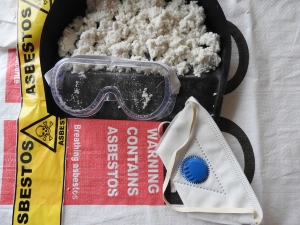The Health & Safety Executive (HSE) recently started an Asbestos Awareness campaign to help highlight and raise awareness of the use of asbestos. It is aimed primarily at people who have a responsibility for the maintenance of buildings.
What is Asbestos?
Asbestos is a natural material with excellent fire-retardant qualities. It was commonly used as a building material until the mid-1980s when its killer qualities were fully exposed. Its import and use were formally banned in 1999. In its natural, undisturbed, and undamaged state, asbestos is harmless, however – once disturbed, it releases fibres which can become lodged in the lungs when inhaled through the mouth or nose.
Prolonged exposure to damaged asbestos could cause serious lung damage and death. The law formally prohibiting the use of this deadly construction material is governed by the Control of Asbestos Regulations 2012, and its subsequent amendments.
Impact on Businesses
Anyone who works within building maintenance, repairs, and renovations is under an obligation to investigate the presence of asbestos or asbestos containing materials (ACM) in buildings. In cases where the material is present, these people also have a responsibility to regularly monitor the asbestos, and record the findings in a register.
The legal duty to manage asbestos covers a wide range of buildings – such as offices, factories, warehouses, museums, schools, and more. Businesses and organisations responsible for the building they occupy – especially those built before the turn of the century when asbestos use was more prolific, must carry out appropriate checks.
Duty Holder Responsibility
The following people are responsible for undertaking regular asbestos checks when applicable:
- Building owners
- Landlord of the premises
- Organisation or person(s) responsible for building repairs and maintenance
Your Legal Responsibilities
The obligations of the duty holder(s) are to:
- Assess if there are any asbestos or asbestos containing materials (ACM) present, as well as the location and condition of these materials.
- Make and keep up-to-date records of asbestos and/or ACM - including its location and overall condition, in a dedicated registry.
- Assess risks of employees and customers being exposed to airborne fibres or materials.
- Produce an Asbestos Management Plan to help manage the risk, implement it, monitor it regularly, and review it on a yearly basis at minimum.
- Provide information on the location and condition of the asbestos to those who are, or are likely to work on/in the area.
Assistance from the Experts
Given the seriousness of the impact of asbestos, it is important that all businesses are aware of their rights, duties, and obligations to ensure they remain compliant, and safeguard the safety of their employees. No matter the size, scale or sector of your organisation, Quest can help deliver information, advice, and policy drafting to ensure your obligations are met and stuck to.
This article is intended for information and educational purposes only, and should not be relied upon as legal advice. If you require any further assistance, please do not hesitate to contact our HR Advice Line Team for free on 0116 274 9193.






